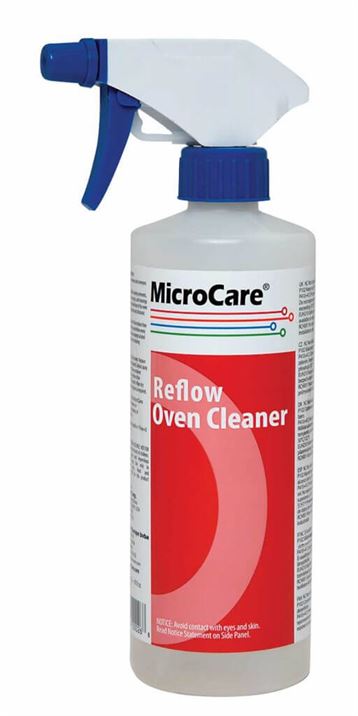How Can I Clean a Spray Fluxer in a Wave Solder Machine?
Cleaning inside wave solder machines is a challenge. The heat turns any flux residues inside the machine into a nasty, black, burned-on sludge that can be very difficult to remove. The pallets, fingers, conveyors and other components also build-up this coating. It's very difficult to remove.
In most wave solder machines, the big worry is the flammability of any solvent you select. Many companies use IPA as a finger cleaner, down in the back of the machine, but to use flammable solvents near a heat source is a recipe for a tragic accident. So let’s make this really easy: never, ever use flammable solvents in a wave solder machine.
In addition, you need a cleaner that is noncorrosive and residue-free. No strong acids or alkaline cleaners can be allowed, plus you wouldn’t want those chemicals mixing, even slightly, with your fluxes. In addition, you need a cleaner that is relatively slow-drying, so the solvent has sufficient tack time to work on the flux residues. This eliminates many nonflammable cleaners like HFCs from DuPont and HFE solvents from 3M; they're great cleaners, but they’ll flash-dry so quickly the cleaning won’t get properly done.
This leaves you with nonflammable, nuetral-pH, water-based hydrocarbon cleaners. The Reflow Oven Cleaner (#MCC-ROC) from MicroCare is a fine choice. It will work just fine in this application. Conveniently, it will use any latent heat in the wave soldering system to boost the cleaning power of the solvent.

